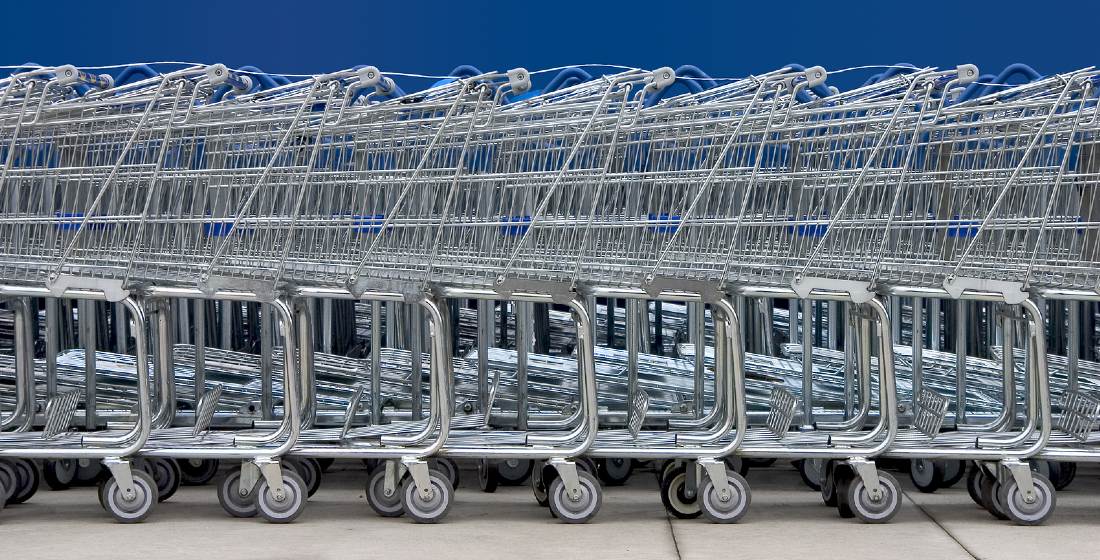Keynote: Linde’s Bruch on headaches, hard choices and hydrogen
TXF spoke with Gernot Bruch, global head of export & project financing at Linde Engineering, the world’s largest industrial gas company, to discuss export strategy in the wake of the war in Russia, ‘friend shoring’, and the challenges of making green hydrogen bankable. ECAs need to step up.

When German exporters were given a proverbial choice between a rock and a hard place on Russia business (more colourfully described in German as a choice between ‘the plague and cholera’), it was a challenge, and many felt left in the rain by ECAs.
Gernot Bruch, global head of export & project financing at Linde Engineering, the world’s largest industrial gas company, discusses export strategy in the wake of the war in Russia, ‘friend shoring’, and the challenges of making green hydrogen bankable. ECAs need to step up.
TXF: Can ‘friend shoring’ insulate global supply chains? And do you see global supply chains becoming more based on geopolitics?
 Gernot Bruch (GB): I’ll go from the global context to the specific situation that Linde Engineering faces. A long series of global trade disruptions in recent years has put a reorganisation of international supply chains on the political agenda. The disruptions began with a trade war between the US and China under President Trump which continued with the disruptions of the COVID-19 pandemic and culminated most recently with the war in Ukraine.
Gernot Bruch (GB): I’ll go from the global context to the specific situation that Linde Engineering faces. A long series of global trade disruptions in recent years has put a reorganisation of international supply chains on the political agenda. The disruptions began with a trade war between the US and China under President Trump which continued with the disruptions of the COVID-19 pandemic and culminated most recently with the war in Ukraine.
The more economic sanctions against Russia have been expanded, the more trade relations are becoming an instrument of foreign and security policy. This also means the independent value of free trade is fading. By contrast, the definition of spheres of influence and the assessment of trustworthiness of supplier countries have gained in importance. This is how I understand the term ‘friend shoring’ which US Treasury Secretary Yellen used to recommend shifting supply chains to ‘trustworthy’ countries.
This initiative is part of US political efforts not to lose its economic leadership in the world to China. However, the EU (and Germany in particular) find themselves between the front lines in this quarrel. Since the unpredictable behaviour of President Trump, they also no longer want to rely unilaterally on the partnership with the US. Moreover, as one of the most open economies in the world, Germany has benefited greatly from globalisation and free world trade, which would be pushed backed with ‘friend shoring’.
For Germany in particular, but not exclusively, such a trade policy could have considerable disadvantages. The desired change in the trade strategy of where businesses locate and the length of supply chains would entail high financial costs and require considerable lead time, especially in the case of complex supply chains.
When establishing supply chains, companies like Linde Engineering must always keep an eye on prices, the availability of raw materials and inputs needed, and on the robustness of supply channels. We also have to be concerned about operational security. That is efficiency, sustainability and resiliency of supply chains.
If we only trade with partners that we think think alike, this will lead to higher costs and less innovation. The concept of friend shoring is not the right way to go.
The lessons to be learned from the EU’s heavy dependence on Russia’s gas is that businesses need to act more cautiously in the future and work on becoming more resilient to external shocks. However, calls for decoupling from global supply chains are wrong. Certainly, Russia will not be a trading partner for a long time to come and we will have to work harder for closer relations with African and Latin American countries. On the other hand, China will remain a very important trading partner going forward.
TXF: How is that going to be affecting multinationals such as Linde Engineering in terms of your export strategy?
GB: What I have said about the global picture also applies to Linde Engineering on a small scale. For the large scale industrial plants we build, in terms of inputs, we need everything from simple bulk materials, such as steel pipes, to highly sophisticated machines and equipment.
We don't get everything from everywhere in the world, which is why it is important for us to be able to buy what we need, where we can get it at the best price in the quality we need and within the required schedule. In a nutshell, it is important that we maintain truly global supply chains and that we are not limited to doing trade only with friendly nations.
I am not suggesting that geopolitics hasn't had or will not have an impact on our business, as the example of Russia clearly shows, but in the light of an uncertain economic climate, we have started a process to rethink our export strategy and to reassess end markets and geographies where we see the best business potential.
This process is not yet complete, so I can't anticipate the results yet. However, it shouldn't come as a surprise if areas such as decarbonisation, low carbon hydrogen, carbon management and the like play an even more central role in our revised strategy.
TXF: We had a conversation two years ago in which you said ‘provided Russia doesn't do anything stupid geopolitically’. They did. What's the impact of Russia’s invasion of Ukraine on Linde specifically?
GB: The impact on Linde Engineering has been quite significant. In line with sanctions in force, we are closing out several large scale Russian projects. This is basically consistent with how all projects are closed out, but at a significantly faster pace.
These actions are ongoing as we speak. And while the situation is fluid with many complexities, we are obviously committed to following all sanctions as we continue to wind down those projects.
We have removed the contribution of Russian earnings from our business outlook and we also have removed the associated projects from our order backlog by the middle of this year. This has meant a very dramatic drop in our backlog, which is tantamount to saying that there was a drastic decline in future utilisation of our capacities.
Clearly, any business that goes through that kind of a change needs to ensure that they reset their cost base. In our case, that significant reduction in backlog and in capacity utilisation means that we are putting together our plans for resetting our cost base/ rightsizing with the aim to remain competitive and also to achieve the margins we have seen in the past into the future.
TXF: The Amur project, specifically, closed just before the recent events in Russia/Ukraine. To what extent have you managed to draw funds down and how exposed do you think the banks are particularly on that project?
GB: I should explain we were not paid from the Euler Hermes-covered export credit but received payments directly from our customer. The reason for that was the financing only closed about two years after we had concluded our commercial contracts. That also means our customer was to be reimbursed from the loan for payments already made. In that instance, we were kind of lucky. For that reason too, I don't have any first-hand information regarding the exposure of banks.
I can only draw on what we have heard from third parties, which was that only the insurance premium was drawn under the loan. While this is likely to be a significant amount, it is probably rather modest if compared to the total loan amount. Therefore, my take on it is that the bank's exposure in this case is relatively limited.
TXF: Is ‘green’ hydrogen commercially bankable on an industrial scale?
GB: So-called green hydrogen is produced through electrolysis of water with renewable electricity. Different sectors and industries can benefit from using green hydrogen as feedstock and because of this, you have several different types of green hydrogen projects. The overarching principle, however, in the use of green hydrogen is ‘Power-to-X’. That is, converting electricity to hydrogen for use in industry, in mobility, in heating or reconversion to power.
While the global capacity for green hydrogen production still is very limited, there are frequent multi-billion dollar project announcements. But for all the buzz surrounding green hydrogen, an insignificant number of low carbon hydrogen project financing deals have been closed. This only shows that financing these projects brings unique challenges. An electrolyser used to make green hydrogen is of no use without a sufficient source of water and renewable energy as feedstock, a way to store and transport the output, and an offtaker to buy and use the output. From a bankability perspective, a range of factors need to be considered:
Technology risks
First are technology risks. Electrolyser plant sizes are not yet nearly big enough. Also, the degradation and durability of electrolysis cells and their components needs to be considered. Given the limited track record of electrolyser deployment, there is the tendency in the market to demand excessive EPC and/or manufacturer warranties. This is a problem because virtually no technology and/or EPC supplier in the market has the necessary financial strength or appetite to bear the related costs and/or risks.
Project on project risk
Second is the ‘project on project risk’, meaning that a green hydrogen project involves the development of two interdependent projects. First is the construction of a renewable electricity generator, and second, the construction of a hydrogen production facility. Whether one chooses a split or an integrated model is almost irrelevant because both models pose serious bankability issues.
In the first case, robust interface agreements will have to be found, and in the second case, a single EPC wrap is usually required, causing the same problem of excessive demands of responsibility on the part of an EPC supplier or contractor.
Revenue risks
One of the important issues is what I would frame as revenue risk. Bankability of a project relies on the certainty of underlying cash flows. However, in the case of hydrogen or specifically green hydrogen, there is no merchant market for hydrogen.
To be financeable the green hydrogen project must have a bankable offtake scheme, which means that at least initially, offtake arrangements in the form of take-or-pay contracts with credible counterparties will be required. That’s also why existing use cases for hydrogen, which rely almost exclusively on so-called grey hydrogen (hydrogen produced from fossil fuels, primarily natural gas), may be among the first green hydrogen opportunities to be financeable. The offtake picture is already clear and will be easier to model.
Transportation risks
Last but not least are transportation issues. Anyone developing a green hydrogen project will need to demonstrate that the project has reliable transportation arrangements in place. For hydrogen the medium of transportation is key. Hydrogen can be transported as a gas, a liquid or solid. Each form, however, carries associated financial, safety and technical feasibility risks. It remains unclear which will become widely adopted. Therefore, at least initially, green hydrogen projects probably need to be developed on a ‘point to point’ basis with specific end users, and green hydrogen producers will likely be located near the end users and use existing infrastructure.
In sum, the high capital requirements of large scale hydrogen projects mean that at least in the short term, they are unlikely to be bankable without some form of government support. As we have seen with the emergence of other renewable asset classes, until technological advancements push green hydrogen prices down to levels that are competitive with traditional fossil fuels, projects will most likely be funded through equity and/or with the assistance of grant funding and/or concessional debt.
Development is really difficult. What is needed at this stage is the end to end concept. It starts with a feedstock, to secure a reliable supply of water and renewable electricity. One way out may be power purchase agreements (PPAs). That may also help with regard to project on project risk, because if you can source green energy based on a PPA you are basically left with only your green hydrogen project. But on the other hand, you also need to secure the demand side. What is the hydrogen use case and how can you transport hydrogen to the location where hydrogen is used? That’s two headaches. If you have to liquefy you lose efficiency or add cost. You lose efficiency when you liquefy it and once again, you lose efficiency when you re-gasify it. And this makes green hydrogen even more expensive.
This is why the first things we will see moving forward in the arena of green hydrogen is the grey use cases or a ‘closed-shop’ kind of concept such as green steel in Sweden.
TXF: How have recent geopolitical events impacted your workings with ECAs?
GB: Recent events have definitely impacted our workings with ECAs, and primarily with the German Euler Hermes.
At a relatively early stage, at the end of March 2022, Euler Hermes determined that the risk of a loss occurring had increased for all transactions relating to Russia and Belarus, for which cover had been granted. And the federal government issued the instruction that production was to be interrupted for the next six months and all deliveries and services were to be stopped unless the federal government agreed in advance to their continuation.
This put us, and most of the German export industry doing business with Russia and Belarus, into a dilemma. This is because the sanctions regimes did not prohibit the fulfilment of contractual obligations per se, but only the delivery of certain industrial goods. For us, the federal government's instruction meant a choice between plague and cholera, [‘Die Wahl zwischen Pest und Cholera’] because we had to decide between either continuing to fulfilling our contractual obligations, but then losing Hermes cover or complying with the federal government's instruction, but then running the risk of being held liable by our customers for enormous contractual and consequential damages for breach of contract.
None of the exporters concerned was happy about the situation. The affected parts of the German export industry felt pretty much left out in the rain by the very instrument that is supposed to give you an umbrella in such situations. It is fair to say that this has cost the Euler Hermes instrument a lot of credibility in the user community as a result.
TXF: What is it you need from ECAs and how is that changing?
GB: This goes back to the difficulties in green hydrogen projects for us as contractor or EPC supplier. Going forward, these projects related to low carbon hydrogen and decarbonisation will be of particular importance to us.
Given the limited track record of electrolyser deployment, in the case of green hydrogen, we are confronted with very rigid demands for extensive EPC wraps and excessive performance warranties, often equivalent to completion guarantees. These demands are a problem and we cannot take on these liabilities and the related risks.
Against this background, we would like to see creative and innovative solutions and even out of the box thinking from ECAs so that we can successfully position ourselves in the early green hydrogen projects and thus get our foot also in the door for further opportunities.
It would be helpful if there were insurance or other financial instruments from ECAs to cover the contractor’s performance warranties and completion liabilities, or at least to relieve them a bit from this burden.
Given the issues around the economic viability of green hydrogen, and also something that could help with the bankability and viability of green hydrogen projects, would be to consider a revenue underwriting agreement. For example, if project cash flows fail to meet modelled debt service assumptions, the ECA could insure these shortfalls, or at least a percentage of the deficit, vis a vis the financing banks.
Maybe this is just a fantasy, but it would really be helpful in that they could guarantee bankability or economic feasibility of green hydrogen projects.
TXF: What other issues are impacting your export financing strategy? Would OECD Consensus reform help?
GB: It continues to be extremely important to reform or modernise the OECD Consensus, thereby re-establishing a global level playing field. The demands of the business community have been on the table for quite a long time now so I won’t repeat them all. However, two issues are important.
Firstly, the scope of the consensus needs to be updated urgently. The arrangement ideally should apply to all official support provided by or on behalf of a government for cross-border trade related finance with a tenor of two years or more. This is important as it would create a uniform set of rules not just for tied export credits, but also for the other forms of financing we have seen internationally being applied in cross-border trade related transactions, such as untied export credits, untied investment loans, untied development loans, and also for official support for equity investment. That would bring us a great deal closer to a level playing field, at least among member states.
Secondly, we also need clarity about what is green or what is sustainable, because there is a growing number of taxonomies and setting of science based target approaches out there. But the lack of alignment makes it extremely difficult to ensure we are applying standards consistently on an international level. What we need is an internationally accepted and applied classification, and probably the most pragmatic approach would be to develop or refine the common approaches, which could then serve as a step towards promoting climate related activity within a common framework among ECAs.
TXF: With all these headaches are you still enjoying work?
GB: It is interesting [professionally]. The downside is that everything that has to do with Russia now is winding down. But it's learning by doing because it's an unprecedented situation. Everything you do, no one has done before, at least in your company. It gets interesting, but it's not very motivating because it all has to do with winding things down. Acquiring new business and helping to win new deals definitely is more fun.
Linde's Gernot Bruch will be speaking at TXF Germany 2022: Export Finance on 25 October





